Spinal cord stimulation (SCS) and dorsal root ganglion (DRG) stimulation
If you've tried other chronic pain treatments and you're still suffering, spinal cord stimulation or a new procedure called dorsal root ganglion may be the best way to stop the pain without having major surgery. Manonmani Antony, MD, DABA, DABIPP, and the highly skilled interventional pain management team at Sussex Pain Relief Center in Georgetown and Lewes, Delaware, understand how much chronic pain damages you physically and emotionally, and they're here to offer a better way to get your life back. The team performs both evaluation and treatment on-site for your convenience, so reach out to either office or book online for help now.
Spinal cord stimulation FAQ
What is spinal cord stimulation?
Spinal cord stimulation is a chronic pain solution, and the spinal cord stimulator device is often referred to as the “pacemaker for pain”. The device is surgically placed near the spine under your skin and sends a mild electric current to your spinal cord. Thin wires called leads carry current from this device to the nerve fibers of the spinal cord.
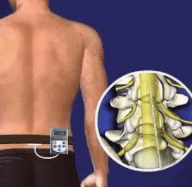
When turned on, the SCS stimulates the nerves in the area where your pain is felt. Pain is reduced because the electrical pulses modify and block the pain signal from reaching the brain.
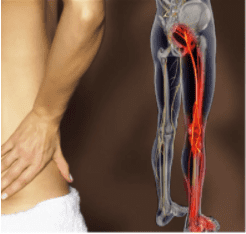
SCS is a life-transforming therapy for people with chronic pain to get back to living your life the way you want. It is less invasive and it could be used as an alternative to repeat back surgery. But getting an implant is a big decision.
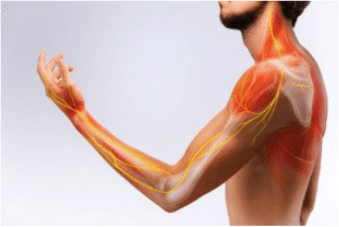
That's why you must undergo a temporary trial to see if the device decreases your level of pain. If the trial ("test drive”) is successful and you felt greater than 50% improvement in pain, an appointment can be scheduled to implant the permanent stimulator device in your body.
What is dorsal root ganglion (DRG) stimulation?
DRG stimulation is a brand-new treatment at Sussex Pain Relief Center. In DRG, the stimulation occurs within your dorsal root ganglion, a group of sensory nerves in your epidural space.
Although it's similar to spinal cord stimulation in some ways, DRG allows for precise stimulator lead placement that avoids the unintended areas of stimulation that sometimes occur with spinal cord stimulation.
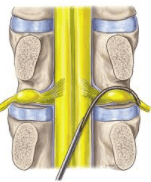
Additionally, DRG stimulation gives you pain relief without triggering the paresthesia (symptoms like tingling or prickling) that sometimes occurs with spinal cord stimulation.
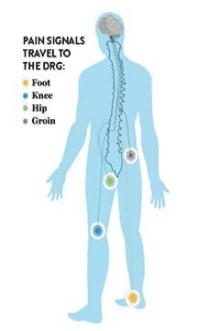
Although spinal cord stimulation can be quite effective for back pain and neck pain, it's not always as useful for complex regional pain syndrome (CRPS). In CRPS, you typically have hand pain, arm pain, leg pain, or foot pain in one limb.
DRG is very effective for CRPS, and can also treat other types of pain that spinal cord stimulation might not necessarily best address, such as chest pain or groin pain.
As with spinal cord stimulation, you have an external remote control to generate signals that relieve your pain when needed.
Who is a spinal cord stimulator candidate?
You are likely a candidate if you have experienced the following:
- Chronic back pain with or without leg pain
- Chronic neck pain with or without arm pain
- Chronic leg or arm pain: persistent pain caused by arthritis, or by nerve damage.
- Failed back surgery syndrome: failure of one or more surgeries to relieve persistent arm or leg pain, but not technical failure of the original procedure.
- Complex regional pain syndrome: a progressive disease in which patients feel constant, chronic burning pain, typically in the foot or hand.
- Arachnoiditis: painful inflammation and scarring of the protective lining of the spinal nerves.
- Amputation stump pain
- Spinal cord injury pain
People whose back or neck pain has not been relieved by back surgery or other treatments are candidates for SCS.
What are the advantages of spinal cord stimulation?
There are many advantages to pursuing spinal cord stimulation at Sussex Pain Relief Center. Some reasons why patients choose SCS treatment include:
- Minimally invasive procedures
- Adjustable pain relief
- Less dependence on opioids
- Targeted pain relief
- Limited or no side effects
- Alternative to oral medication
- No refills needed and no monthly office visits to the doctor
- Insurance coverage
If you struggle with back pain and want to avoid these tedious and expensive procedures, SCS is the right option for you.
What to expect before the procedure?
Patients who are candidates for spinal cord stimulator implants must first meet with device specialists and psychologists for a psychological evaluation. The goal is to make sure patients understand the procedure well and are mentally and emotionally prepared for it.
What to expect during SCS stage 1 (trial/test drive)?
The initial trial SCS procedure is an outpatient procedure to determine if the implant will work for the type, location, and severity of your pain. It takes about an hour. Patients receive temporary leads and an external battery.
After 7 days, you will return to the office to have the trial leads removed and to discuss permanently implanting the stimulator if it relieved the pain by more than 50% and improved daily function.
What to expect during SCS stage 2 (permanent implantation)?
The permanent SCS procedure is an out-patient procedure, and it takes about 1-2 hours. Implantation of permanent leads and the internal battery are placed during this procedure.
You receive an external wireless programmer that lets them adjust the intensity and timing of electrical pulses and access pre-programmed settings to control your pain.
What to expect after the procedure?
The handheld programmer lets you turn the stimulator on and off, select programs, and adjust the strength of the stimulation. You can use your spinal cord stimulator around the clock if necessary. You can start living life again!
It does not have to be a permanent procedure. The implanted neurostimulator can be surgically removed if you do not like it or if you decide to pursue a different treatment. Most of these devices are MRI compatible at this time.
If traditional methods have failed to alleviate your chronic pain, please contact Sussex Pain Relief Center to schedule a consultation, or book online now.